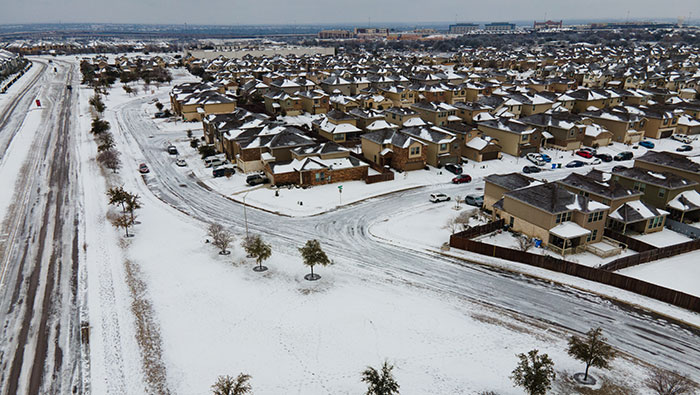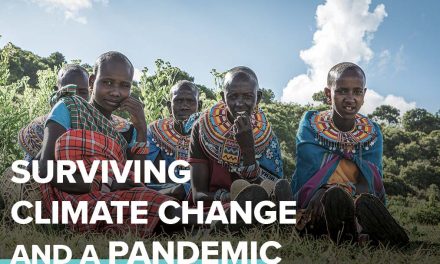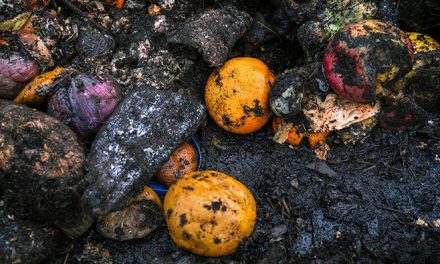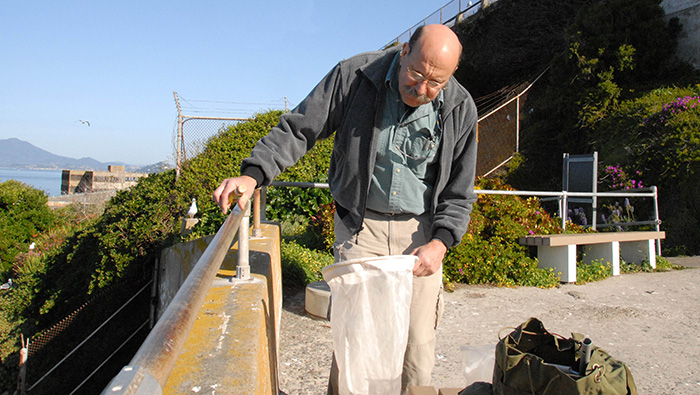
Why Are Natural Disasters Intensifying?
With annual fires in the west, hurricanes and floods in the east, and extreme colds in the south of the United States, climate catastrophes seem to occur more frequently and at a higher caliber each year.
According to a study conducted by the International Federation of Red Cross and Red Crescent Societies, climate disasters have been increasing since the 1960s, with a steep 35 percent increase recorded since the 1990s. In 2020 alone, the United States endured 30 record-breaking named storms during hurricane season, 4 million acres of California’s land burned by wildfires during fire season, and the global average surface of the Earth overall in 2020 tied for the warmest year on record with 2016.
Paul Ullrich, associate professor of regional climate modeling at UC Davis, studies climate change’s influence on extreme weather events and atmospheric dynamics. Here, he describes the ecological factors contributing to the range of climate disasters America has recently encountered.
Texas’ Winter
Houston typically averages 56 degrees in mid-February; this year, the city dipped to 20 degrees, with the coldest recorded temperature at 13 degrees. The extreme cold, combined with strong winds and heavy snowfall, led to electricity outages, followed by dry taps and burst pipes as temperatures reach historic lows in more than a third of the continental U.S.
Ullrich pinpointed the unusual weather conditions in the Lone Star State as resulting from an anomalous and rare meteorological pattern concerning polar jet streams. Polar jet streams, which are regions of strong and high winds located in each hemisphere, move southward during winter and become stronger. Their strength and the degree to which they meander indicates how contained the Arctic air is.
In the case of Texas’ recent conditions, the polar jet stream weakened substantially as a consequence of a stratospheric sudden warming event, Ullrich said. This allowed Arctic air to seep out from its confines, which are normally over the Arctic circle southward, and unusually made its way to the southern tip of Texas. When this air escaped, Ullrich explained, no correcting factor from the underlying meteorology could confine it again. It persisted for an anomalous period of time and affected the local weather patterns.
California’s Fires
In recent years, California has experienced its worst fire seasons on record. Multiple factors contribute, Ullrich said: Stronger summertime drying associated with warmer temperatures during the summer, compounded by a loss of the snowpack in the Sierra Nevada and Upland forests.
“The loss of snowpack is directly attributable to climate change,” said Ullrich.
Warming temperatures over the past 50 years have resulted in a 20 to 30 percent loss of California’s natural mountain snowpack. As a consequence, little to no snow persists through the summer season and, thus, less water leads to drier conditions. Dry forests are primed for any spark that could ignite a wildfire, and fire intensity is exacerbated by dryness.
In addition, intense wind speeds during certain times of the year, as well as years of forest fire suppression activities, also contribute. The latter resulted in an accumulation of debris, which is flammable under the right meteorological conditions.
Storms and Floods
While fewer land falling storms along the East Coast have occurred recently, the region still faces an increase in the intensity of some of those storms.
These events bring with them increased precipitation, the cause of which is directly attributable to climate change. Warmer air tends to hold more water vapor, Ullrich explained. Therefore, extreme precipitation events such as tornadoes and hurricanes often lead to an increase in precipitation resulting in floods.
Heavier rain has caused an increase in the economic costs associated with flooding and water damage,” he added.
The Role of Climate Change
California wildfires and major flooding events across the U.S. can be attributed directly to climate change, Ullrich said.
Factors such as greenhouse gas emissions, fossil fuel burning, nonrenewable energy contribute to these disasters. “Unfortunately, the climate change that we’ve induced through our actions has no borders associated with it. Carbon dioxide will propagate globally and cause a shift in the disasters that are felt globally,” said Ullrich.
The primary contributor to greenhouse gas concentrations in the atmosphere is energy generation and transportation. Ships and planes are significant contributors to atmospheric carbon dioxide content. Industrial actions associated with coal burning, natural gas burning, fossil fuel burning and cement production add greatly to the amount of CO2 in the air.
Still, individual actions can be taken in the effort to end climate change, Ullrich said. Try to find alternative means of transport to reduce individual carbon footprint: Trains are one of the lowest contributors to overall carbon output on an individual level, while planes are some of the worst polluters. We can also make conscious decisions about sustainability by not generating excess waste, whether that be waste in the form of atmospheric carbon dioxide or waste sent to landfills, Ullrich added.
“Be aware that we in the U.S. have a huge footprint when it comes to our use of natural resources. Minimizing how much we use in terms of those natural resources will make the planet more sustainable in the long run,” said Ullrich.
Government investment in science and technology development — such as carbon capture, solar wind usage, hydro power, and nuclear power for energy generation — would be beneficial in combating climate change, he added.
The most effective solution may be a carbon tax, Ullrich said.
“[This means collecting] a tax on everything that has a carbon footprint associated with it, and then paying the population back from the pool of money that was accumulated as part of that carbon tax,” said Ullrich.









